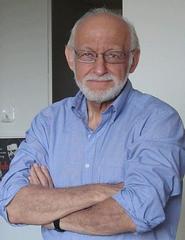
Stephen J. Goldberg, associate professor of art history, published an essay in the journal Comparative and Continental Philosophy titled “The Gestural Imagination: Toward a Phenomenology of Duration in the Art of Chinese Calligraphy.” The essay appeared in the November 2009 issue.
The essay represents a reflection on the nature of shufa, the Chinese “art of writing,” and its ontological grounding as a continuous “durational transcription,” of an inscriptional event, producing a phenomenology of “viewing.” This distinguishes it from ordinary writing (xiezi) in which attention is focused on the lexical meaning of the written characters (i.e., an experience of “reading”). Viewing a calligraphic inscription actually unfolding in time (i.e., as a dynamical structure or “temporal object event”), however, raises an interesting theoretical question concerning the two complementary aspects of temporal consciousness of calligraphy as both duration and unity. This is addressed in terms of recent discussions of a dynamical approach to Edmund Husserl’s theory of time consciousness.
The essay represents a reflection on the nature of shufa, the Chinese “art of writing,” and its ontological grounding as a continuous “durational transcription,” of an inscriptional event, producing a phenomenology of “viewing.” This distinguishes it from ordinary writing (xiezi) in which attention is focused on the lexical meaning of the written characters (i.e., an experience of “reading”). Viewing a calligraphic inscription actually unfolding in time (i.e., as a dynamical structure or “temporal object event”), however, raises an interesting theoretical question concerning the two complementary aspects of temporal consciousness of calligraphy as both duration and unity. This is addressed in terms of recent discussions of a dynamical approach to Edmund Husserl’s theory of time consciousness.
Posted January 19, 2010
